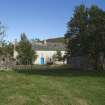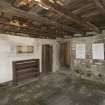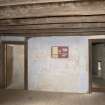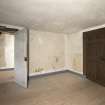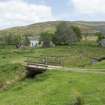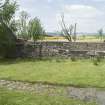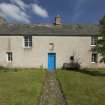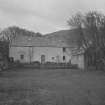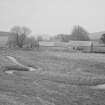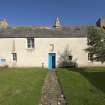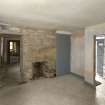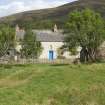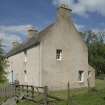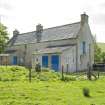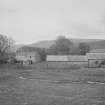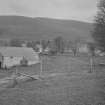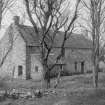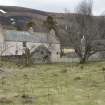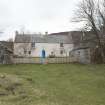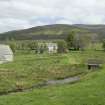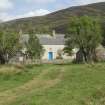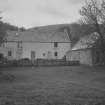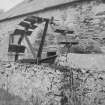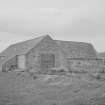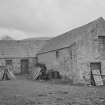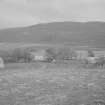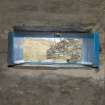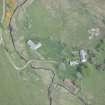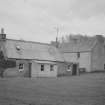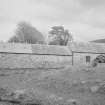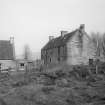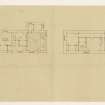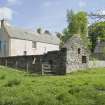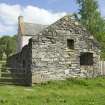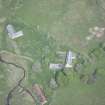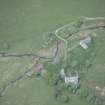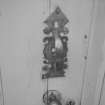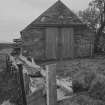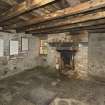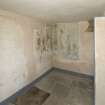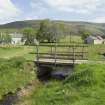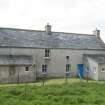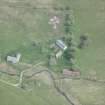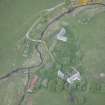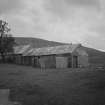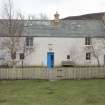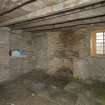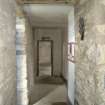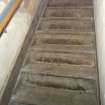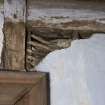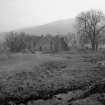Following the launch of trove.scot in February 2025 we are now planning the retiral of some of our webservices. Canmore will be switched off on 24th June 2025. Information about the closure can be found on the HES website: Retiral of HES web services | Historic Environment Scotland
Scalan, Roman Catholic Seminary
Theological College (18th Century)
Site Name Scalan, Roman Catholic Seminary
Classification Theological College (18th Century)
Alternative Name(s) Braes Of Glenlivet; Former Roman Catholic Seminary
Canmore ID 117667
Site Number NJ21NW 21
NGR NJ 24665 19470
Datum OSGB36 - NGR
Permalink http://canmore.org.uk/site/117667
- Council Moray
- Parish Inveravon
- Former Region Grampian
- Former District Moray
- Former County Banffshire
Scalan is renowned for the important role it played in preserving the Roman Catholic faith in Scotland during the eighteenth century. Between 1717 and 1799, with the help and support of the Dukes of Gordon, it functioned as a seminary, schooling over 100 youths who subsequently left Scotland to train as priests in Scots Colleges abroad. It also served as an administrative centre for the Roman Catholic church in Scotland.
The seminary was first established in a small cottage and, on several occasions in the 1720s, pupils and staff were forced to go into hiding due to the presence of government troops in the area. In 1746, following the Battle of Culloden, the Duke of Cumberland led a detachment of troops who burned the cottage to the ground.
Scalan was subsequently rebuilt, and the site of the earlier cottage can still be identified to the west of the two-storeyed farmhouse and attached cottages which were acquired in 1767 and converted for seminary use. Some features include panelled doors, stone-flagged floors and box beds.
Text prepared by RCAHMS as part of the Accessing Scotland's Past project
NJ21NW 21.00 24665 19470
Scalan [NAT]
OS 1:10,000 map, 1972.
NJ21NW 21.01 NJ 24632 19427 South Steading with Mill Wheel
NJ21NW 21.02 NJ 2467 1935 Pond; Dam; Sluice
NJ21NW 21.03 NJ 24595 19510 North Steading with Stable and Mill Wheel
Standing Building Recording (2012)
NJ 2466 1947 Scalan is situated in the remote Ladder Hills, among rough pasture and small farms. The college was founded in 1716 to train priests at a time when the Catholic Church was suppressed. It had a varied history during the 18th century, was burned down in 1746, but was rebuilt nearby, and remained in use until the 19th century. The college of the 1760s is a rectangular building of stone, now with a slate roof, to appear as a vernacular building. Originally it had a turf roof. There is no substantial church, although at the N end of the building a chapel is adjacent to the Master’s bedroom on the first floor. Late 20th-century conservation works returned the building from farmhouse to the college layout. Survey of Places of Worship in Scotland.
Archive: Scottish Church Heritage Research
Funder: Historic Scotland
Edwina Proudfoot and Jonathan Dowling, Scottish Church Heritage Research (SCHR) 2012 (DES)
Photographic Survey (4 September 2013)
Photographed for the Listed Buildings Area Survey 2013-14
Note (August 2017)
Why Tomintoul? High hopes never quite fulfilled
To many of us, the name Tomintoul is most familiar from the memorable words of radio traffic bulletins, announcing the arrival of winter: “The snowgates on the A939 Tomintoul to Cock Bridge are closed”. Some have also heard that it is the highest village in the Highlands, but the question I am most frequently asked is, “Where is Tomintoul?” Well, it is in Strathavon, a district nestled into the northern edge of the Cairngorms, through which the River Avon rushes down to join the Spey at Ballindalloch. The strath, and neighbouring Glenlivet, together present a district of stunning scenery: rolling hills, deep river gorges, agriculture and forestry, ringed by mountainous ranges (the Cairngorms to the south, the Cromdale Hills to the west, and Ben Rinnes and the Ladder Hills to the east) that serve to conceal it from most travellers, even today. Here, in 1775, the Duke of Gordon chose a ridge of moorland as the site for a new village. But, I am asked, why?
The second half of the 18th century was a time of rapid change in the economy of the Highlands. Large areas were turned over to sheep farming, displacing thousands of tenants and their families. Often, they moved south to find work in the rapidly-growing towns of lowland Scotland; but many landowners encouraged their tenants to stay by constructing new towns and villages that were to provide a workforce for new industries, a focus for markets and employment for tradesmen. This was a very bold idea. Apart from a few ancient burghs gathered around cathedrals and castles (such as Elgin and Inverness), urban communities were almost unknown in the Highlands; instead, farming communities were clustered into tiny settlements (‘bailtean’ in Gaelic). Now, new towns and villages were laid out by professional surveyors, all sharing the regular, geometric, plan characteristic of the Georgian period. Some 500 new settlements were founded around Scotland, many of them in the Highlands, and the 4th Duke of Gordon was an enthusiastic builder, responsible for Tomintoul, Fochaber, Kingussie, Portgordon and a rebuilt Huntly.
Tomintoul was sited on a new road, constructed in 1754 by the army to link their state-of-the-art Fort George (near Inverness) with outposts in upland Aberdeenshire. In the years after Culloden, the road was envisaged as part of the government’s insurance against another Jacobite rising. The Duke of Gordon saw it instead as an opportunity to encourage trade, offering a link to markets in the south, and the new village was intended as a centre of the linen industry. It didn’t quite work out. The planned linen mill was never built, and development was slow. Queen Victoria, famously, was most uncomplimentary about Tomintoul on a visit in 1853. This, however, is the key to its importance today. In many cases, the new villages prospered through the 19th century, and have expanded far beyond their original boundaries, disguising their character; others foundered and have all but vanished. Tomintoul sits between these extremes, offering us one of the best-preserved examples of Georgian planning in the Highlands, its layout scarcely changed from the plans drawn up 240 years ago by Thomas Milne, the Duke’s surveyor.
Tomintoul and Glenlivet: religious minorities in a hostile world
The village straddles the broad Main Street, its houses almost all fronting directly onto it (gardens are to the rear: no ostentatious display here!) At the centre is the spacious Square, flanked by rows of cottages (some dating back two hundred years) and two large Victorian hotels. Perhaps the most interesting aspect of the village, though, is the position of its churches. The Gordons of Huntly remained a resolutely Catholic family in fiercely Presbyterian Scotland, and their religious influence can be seen throughout their estates. In Tomintoul the tension between the two traditions is laid bare. To the north of the square, at the lower end of the town, is the Church of Scotland, built in 1826-27 and one of Thomas Telford’s celebrated ‘Parliamentary’ churches. The manse (also a Telford design) is next door, and the Protestant school was established here too. Up the hill, south of the square, stands the Catholic Church of Our Lady and St Michael, built ten years after its rival, and next door, it too had its school. Divisions have long since blurred and healed, of course, but they remain commemorated here in the very geography of the town.
The resilience of Catholicism is also plain to see in the wider district, especially towards Glenlivet, where impressive churches are found at Tombae and Chapeltown. And it is in Glenlivet that we find one of the most remarkable monuments of Catholic resilience. At the top end of the glen, in a hidden corner of this hidden landscape, stands Scalan, an attractive Georgian house and once a secretive college, where the sons of Catholic gentry were trained as priests. In 1714 a Catholic seminary was discretely established on an island in Loch Morar, on the west coast of Scotland, but it was forced to close down after the failure of the 1715 Jacobite Rising. It was re-established here in Glenlivet, presumably with the tacit consent of the Duke of Gordon. The college was burned to the ground by government troops in the weeks after Culloden, but teaching continued. The building we see today dates from 1769. It became a farmhouse when the college moved to Aberdeenshire in 1799, but it has now been restored as a museum, offering a wonderfully atmospheric recreation of the austere life of teachers and pupils alike. Go there, learn, and marvel!
Eve Boyle - Communities Liaison Manager







































































